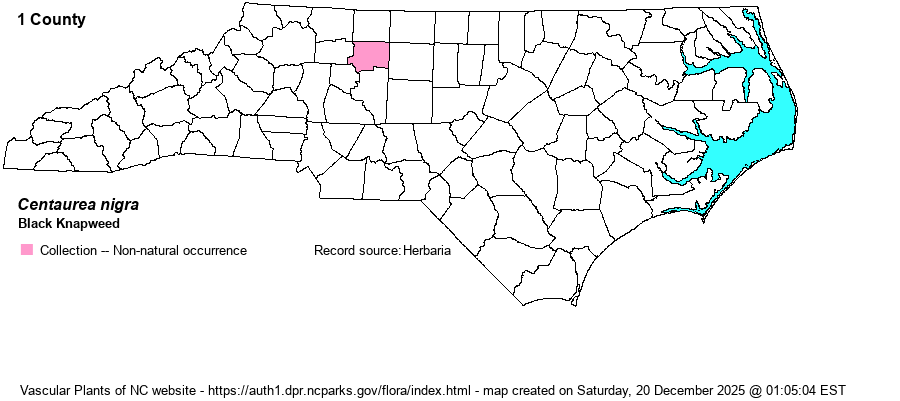| Account for Black Knapweed - Centaurea nigra L. | ||||||||||
| Flora of SE US | Google Images |
| County Map - click on a county to view source of record. | |
 | |
| Vascular Plants of North Carolina |
| Account for Black Knapweed - Centaurea nigra L. | ||||||||||
| Flora of SE US | Google Images |
| County Map - click on a county to view source of record. | |
 | |